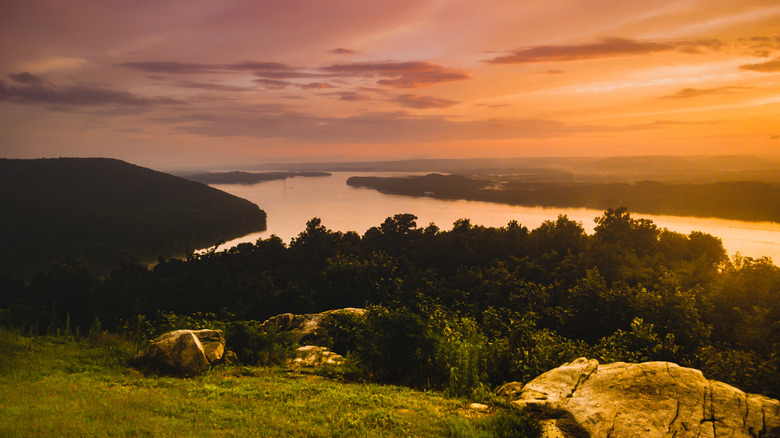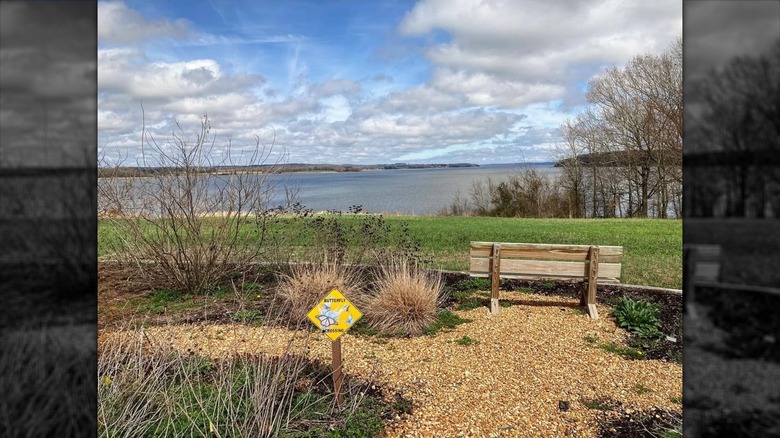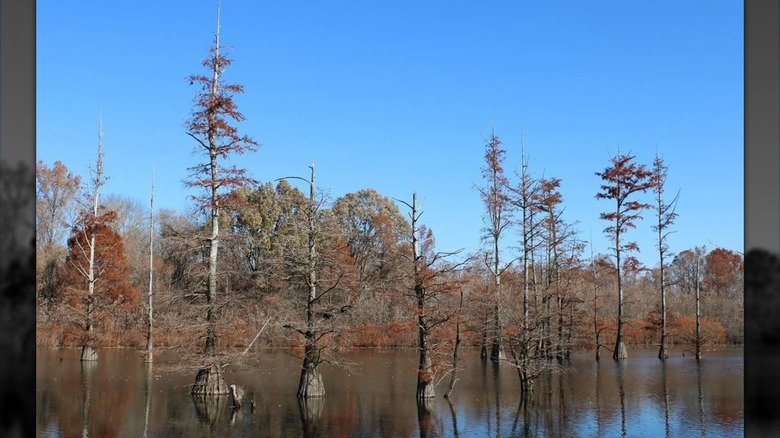Between Nashville And Memphis Is A Lovely Tennessee Wildlife Preserve With Scenic Hikes And Birdwatching
A thriving nature preserve, where the critters roam wild and the greenery grows free, can be found tucked away in the northwest corner of the Volunteer State, and boy is it worth a visit. The Tennessee National Wildlife Refuge lies in between the bustling cities of Memphis, home to one of trendiest neighborhoods in Tennessee, and Nashville, where the nearest major airports are. This lovely outdoor paradise stretches across the state for more than 50,000 acres, treating locals and visitors alike to a beautiful billowing landscape dotted with hiking trails, scenic drives, and observation decks for wildlife viewing and birdwatching.
The refuge, which snakes along the Tennessee River for 65 miles, is comprised of three units. The first, Big Sandy, sits south of Kentucky's sprawling Land Between The Lakes National Recreation Area, hugging the waters of Kentucky Lake. The second unit, Duck River, is about a 30-minute drive away from the city of New Johnsonville, while the third unit, Busseltown, is farther south near Parsons. As you may have gathered, the park's three units are widely dispersed, and driving from one unit to the next can take over an hour.
Although camping isn't allowed on-site, campgrounds and lodging options can be found a stone's throw away from each arm of the refuge. The Brownfield Riverside Resort is situated on the banks of Kentucky Lake near the Big Sandy section, with several other campgrounds nearby. Two RV parks — the H and H Campground and the I 40 Hideaway with cabin rentals — are just downstream from Duck River. The city of Parsons near the Busseltown unit has a few accommodations, too, including the Parsons Inn and the Deerfield Inn.
Enjoy the view at Tennessee National Wildlife Refuge
The Tennessee National Wildlife Refuge was established in 1945 as a safe place for migratory birds to rest, nest, and refuel during their cross-country journeys. Featuring a varied landscape of forests, wetlands, farmland, and grasslands, the protected area has been visited by more than 300 species of birds, putting it up there with some of the best birdwatching destinations the U.S. has to offer. Hit the trails to catch sight of the winged creatures and a bevy of other wildlife, from white-tailed deer and rabbits to beavers and various reptiles.
The refuge's three main trails weave through the Big Sandy unit. Set out on the Britton Ford Trail, a 2.5-mile looped path offering woodsy and lakefront views, along with interpretive signage about the surrounding area. For a shorter jaunt, tackle the half-mile Nature Discovery Trail, which is adjacent to the visitor center near the shoreline. It's important to note that both trails are closed from November 15 to March 15 each year, and during permitted hunting weekends in the fall.
The third path, the easy, 1.1-mile Chickasaw Nature National Recreation Trail, is located on the 7,000-acre Big Sandy Peninsula, which lies between the Big Sandy and Tennessee Rivers. Unlike the other two, this route is open year-round and will take you through a historic homestead and old gristmill site. The sprawling peninsula also houses a wildlife viewing platform called the Bennett's Creek Observation Deck, great for seeing bald eagles flying high in the winter months.
What to know before you visit the Tennessee National Wildlife Refuge
Ready to get hiking? Whether you plan to hike or watch wildlife, the Tennessee National Wildlife Refuge is open daily from just before sunrise to shortly after sunset. However, much like the Britton Ford and Nature Discovery Trails, parts of the sanctuary are unavailable from late fall to late winter, when the grounds close for visiting waterfowl and other migratory birds. The refuge's 3-mile scenic driving area that winds along Blue Goose Boulevard at Duck River is also closed during this time. However, it's totally worth exploring during the warmer months, with interpretive signs about the various wildlife and surrounding wetlands as you cruise along.
Those who love to paddle will be happy to know that roughly half of the refuge is in water, which you can freely roam year-round to your heart's content. Get out on the water in a kayak or canoe, or take your boat out via one of the park's many ramps. As previously mentioned, camping on the refuge is off limits. The same goes for riding ATVs, bikes, or horses on the trails. Dogs are allowed on the grounds, but must always be leashed. The refuge does offer free admission, at the time of writing, so you can connect with nature and enjoy the great outdoors at no charge.


